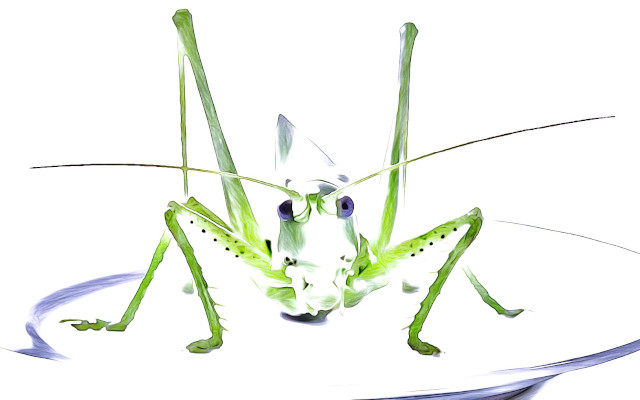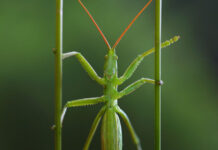Domestic crickets(Acheta domesticus) have been the subject of two approvals as novel foods, at the European level, under reg. EU 2015/2283. Reg. EU 2022/188 authorized its use in frozen, dried and powdered form, while reg. EU 2023/5 allowed the use of their partially degreased powder (1,2). In both cases, with five-year exclusivity in favor of the firms that applied for the permit.
Elena Cavallone, News Editor at Linkedin News, submits some brief questions to us on the topic of ‘insects for food use‘. We are pleased to respond to you, hoping to contribute to public information on food research and innovation. Which:
- affects not only insects but various other matrices, as seen in the recent cases of protein from mushrooms, rice and peas, and milk. (2) In addition to microalgae, also a source of the valuable marine Omega 3, (3) and in any case:
- is subject to special rules and procedures that ensure the food and nutritional safety of all novel foods, the placing of which on the EU market is subject to prior authorization.
1) Novel Foods, premise
Novel Foods can only come onto the market in the Old Continent’s single market following approval by the European Commission.
Member states participate in the decision-making process through their government representations to the PAFF(Plants, Animals, Food and Feed) Standing Committee.
Authorization must always come based on an EFSA scientific evaluation of the safety of novel foods for human consumption under certain conditions and levels of use.
2) ‘Food safety’ issue
An operator who intends to apply for authorization to place on the EU market a food that qualifies as ‘new’-that is, lacking significant experience of safe consumption in Europe prior to May 15, 1997 (the effective date of the first Novel Foods Regulation No 258/97) must submit to the European Commission a Dossier including:
- analysis conducted on different production batches to determine microbiological and contaminant content (e.g., heavy metals, mycotoxins, biogenic amines, pesticides),
- Toxicological analyses and/or studies. That is, information on the history of safe consumption and use in third countries.(4)
EFSA(European Food Safety Authority), on this basis, verifies the food safety of the novel food under the conditions of use proposed by the applicant. With the power to propose to him the reduction of usage levels or the restriction of the consumption target, for example, excluding the most sensitive population groups.
2.1) Crickets and food allergies
The European Food Safety Authority also considered the possible sensitivity to cricket proteins by individuals allergic to crustaceans, mollusks, and mites.
Therefore, a special warning addressed to the aforementioned categories of allergic consumers is prescribed on the labels of foods containing crickets.
Conversely, conclusive evidence regarding the possibility that Acheta domesticus can cause primary allergic sensitization is still lacking.
3) Possible health risks?
The approvals-always based on EFSA’s scientific opinions-also take into account the average intake of foods where the novel food could be used as an ingredient, having regard to the population groups specified by the applicant. (5)
Thus, the European Food Safety Authority verifies the nutritional safety of the novel food, in addition to its food safety. Assessing whether average consumption of foods containing it may lead to nutritional deficiencies, i.e., excessive intakes of nutrients and/or antinutrients.
4) Suitability for human consumption
The evaluation of EFSA takes into account the entire production process of the novel food, to ensure 100 percent their safety and suitability for human consumption: in the case of crickets and other insects, the analysis starts from the animal rearing and feeding stage (also having regard to the possible carry-over Of some allergens, e.g., wheat).
Operators applying for authorization must therefore ensure and demonstrate to EFSA the proper management of both Good Hygienic Practices (GHPs, now integrated into Pre-Requisites Programs, PRPs) and HazardAnalysis on Critical Control Points(HACCP) systems.
5) Novel foods, tentative conclusions
The Novel Foods Regulation
No 2015/2283 expresses perhaps the highest level of assurance on food safety and nutritional safety ever defined and applied internationally. Taking into account:
- Analytical and scientific rigor required in the submission of permit files,
- Transparency in risk assessment by an independent authority (EFSA),
- policy assessment shared in Brussels with member state governments.
There is more to trust in a pasta with protein supplementation from cricket powder licensed as a novel food than in a nonorganic vegetable soup. Whereas:
- more than one third of renewals of pesticide approvals used in the EU are not preceded by the required update of the risk analysis, (6)
- public health risks related to the cocktail effect of mixtures of pesticides and other agrotoxics are still lacking appropriate assessments. (7)
Dario Dongo
Notes
(1) Dario Dongo, Andrea Adelmo Della Penna. Crickets at the table, green light from EFSA. GIFT (Great Italian Food Trade). 18.8.21
(2) Dario Dongo, Andrea Adelmo Della Penna. Novel food. Green light in EU for protein from mushrooms, rice and peas, insects, milk and new sugars. GIFT (Great Italian Food Trade). 14.1.23
(3) Dario Dongo, Giulia Torre. Microalgae for food use and Novel Foods regulation, the state of the art in the EU. GIFT (Great Italian Food Trade). 29.1.22
(4) Dario Dongo, Giulia Torre. Notification of Traditional Foods from Third Countries as Novel Foods in the EU. GIFT (Great Italian Food Trade). 4.3.22
(5) EFSA has (exclusive, unfortunately) access to consumption data on specific food groups and types provided periodically by the 27 EU member states. Comprehensive European Food Consumption Database
(6) Marta Strinati. Not just glyphosate. 33% of pesticides used in EU lack risk assessment. GIFT (Great Italian Food Trade). 26.11.22
(7) Marta Strinati. Pesticide cocktails cause toxicity, even at doses allowed in the EU. New study. GIFT (Great Italian Food Trade). 24.10.20
Dario Dongo, lawyer and journalist, PhD in international food law, founder of WIISE (FARE - GIFT - Food Times) and Égalité.








